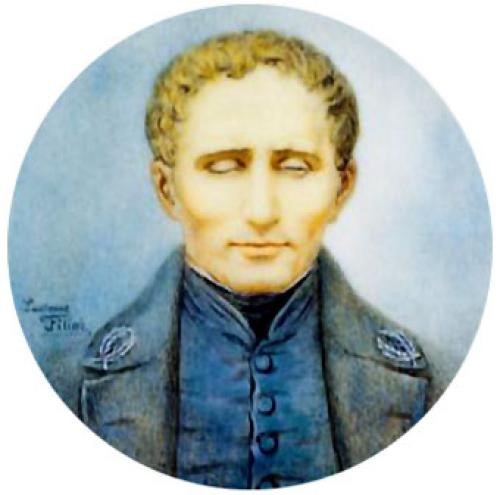 Braille is a tangible system of reading and writing developed for the blind and visually impaired by Louis Braille. The history of the system goes all the way back to the 1800s.
Braille is a tangible system of reading and writing developed for the blind and visually impaired by Louis Braille. The history of the system goes all the way back to the 1800s.
Charles Barbier served in the Napoleon Bonaparte French army. He created a new system called ‘Night Writing’ for the purpose of safe conversations between the soldiers during the night. Several soldiers were killed by the enemy soldiers because of using lamps or lights during the night to read combat messages. So, the system he developed was based on 12-dot cells which were raised six dots tall and two dots wide. Each dot indicated a particular letter or sound. Unfortunately, the fingertip couldn’t feel all the dots with just one touch.
 Louis Braille born in Coupvray, France in 1809 was blinded when he was very young because he accidentally hurt his eye with his father’s awl. When he was just eleven years old, he got inspired by ‘Night Writing’ and made efforts to create an efficient reading and writing system for the blind or visually impaired people like him. He had enrolled himself in the National Institute of the Blind in Paris and spent nine years developing and bettering this system with raised dots. Therefore, the learning system came to be known as Braille.
Louis Braille born in Coupvray, France in 1809 was blinded when he was very young because he accidentally hurt his eye with his father’s awl. When he was just eleven years old, he got inspired by ‘Night Writing’ and made efforts to create an efficient reading and writing system for the blind or visually impaired people like him. He had enrolled himself in the National Institute of the Blind in Paris and spent nine years developing and bettering this system with raised dots. Therefore, the learning system came to be known as Braille.
 After all of his hard work, was based on cells of only six dots and not twelve. This improvement by him was significant so that only one finger could cover the entire cell with one expression and conveniently move between one cell to the other. Braille slowly spread and got accepted all over the world for the blind individuals who wished to read and write. It continued the way he invented and intended it to be.
After all of his hard work, was based on cells of only six dots and not twelve. This improvement by him was significant so that only one finger could cover the entire cell with one expression and conveniently move between one cell to the other. Braille slowly spread and got accepted all over the world for the blind individuals who wished to read and write. It continued the way he invented and intended it to be.
The minor modifications could be adding contractions which represent the groups of letters and words which appear quite often in the language. This enabled faster reading of braille and reduced the size of the books. The system became less complicated for the people. Not just the blind, but many others also learned Braille to understand the system and teach the blind.
Braille died in 1853 when he was just 43. he couldn’t witness his country France adopting braille as their official system for communication for the blind. In 1860, braille was adopted by America’s The Missouri School for the Blind in St. Louis. Over the years, millions of people have benefited thanks to Louis Braille. Worldwide many languages have been transcribed into Braille. The development has empowered the visually impaired people to achieve the same success in careers and academics.
Today, the entire world recognizes him for the system that has united millions of people. The disabled no more has to stay illiterate, they can achieve their desired ambitions in life because they are educated at the same level as everyone else. Literally, any books or text can be converted to Braille now, the advancements of internet and technology have enabled us to convert a normal text into Braille using online translators. Several gadgets have been developed to revolutionize Braille by incorporating it into the screens in a cost-friendly manner. Some examples include InsideONE, BLITAB, Amazon Fire Tablet, Kindle etc.
In some places, however, there has been a decline or Braille literary crisis since the 1963s because of less amount of Braille Education. This has been widely discussed by researchers and professionals all over the world. Some of the reasons include fewer volunteers and teachers to teach the system to the blind, disputes regarding the utility of the codes, negative perceptions about the language, increase in reliance on the print-magnification technology and speech outputs, and finally increase in the number of students who are non-readers, they prefer technological means or auditory processors instead.
Even though mandating laws like The Individuals with Disabilities Education Act have not ended the controversy, efforts are still being made to correct the misconceptions and educate the blind who wish to learn Braille because no impaired or disabled child should be debarred from an opportunity to be equal and literate. To learn more about the usefulness of Braille, visit here.
